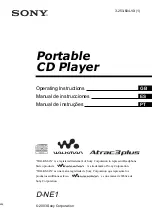
152
ExtremeWare XOS 10.1 Concepts Guide
Spanning Tree Protocol (STP)
The protocol migration timer is neither user-configurable nor derived; it has a set value of 3 seconds.
The timer starts when a port transitions from STP (802.1d) mode to RSTP (802.1w) mode and vice versa.
This timer must expire before further mode transitions can occur.
RSTP Operation
In an RSTP environment, a point-to-point link LAN segment has two bridges. A switch that considers
itself the unique, designated bridge for the attached LAN segment sends a “propose” message to the
other bridge to request a confirmation of its role. The other bridge on that LAN segment replies with an
“agree” message if they agree with the proposal. The receiving bridge immediately moves its
designated port into the forwarding state.
Before a bridge replies with an “agree” message, it reverts all of its designated ports into the blocking
state. This introduces a temporary partition into the network. The bridge then sends another “propose”
message on all of its designated ports for further confirmation. Since all of the connections are blocked,
the bridge immediately sends an “agree” message to unblock the proposing port without having to wait
for further confirmations to come back or without the worry of temporary loops.
Beginning with the root bridge, each bridge in the network engages in the exchange of “propose” and
“agree” messages until they reach the edge ports. Edge ports connect to non-STP devices and do not
participate in RSTP. Their role does not need to be confirmed. If an edge port receives a BPDU, it enters
an inconsistency state. An inconsistency state puts the edge port into the blocking state and starts the
message age timer. Every time the edge port receives a BPDU, the message age timer restarts. The edge
port remains in the blocking state until no further BPDUs are received and the message age timer
expires.
RSTP attempts to transition root ports and designated ports to the forwarding state and alternate ports
and backup ports to the blocking state as rapidly as possible.
A port transitions to the forwarding state if any of the following is true. The port:
•
Has been in either a root or designated port role long enough that the spanning tree information
supporting this role assignment has reached all of the bridges in the network.
NOTE
RSTP is backward compatible with STP, so if a port does not move to the forwarding state with any
of the RSTP rapid transition rules, a forward delay timer starts and STP behavior takes over.
•
Is now a root port and no other ports have a recent role assignment that contradicts with its root
port role.
•
Is a designated port and attaches to another bridge by a point-to-point link and receives an “agree”
message from the other bridge port.
•
Is an edge port.
An edge port is a port connected to a non-STP device and is in the forwarding state.
Recent root
The timer starts when a port leaves the root port role. When this timer is running,
another port cannot become a root port unless the associated port is put into the
blocking state. The default value is the same as the forward delay time.
Table 32: Derived timers (continued)
Timer
Description
Summary of Contents for ExtremeWare XOS 10.1
Page 12: ...12 ExtremeWare XOS 10 1 Concepts Guide Contents...
Page 15: ...Part 1 Using ExtremeWare XOS...
Page 16: ......
Page 20: ...20 ExtremeWare XOS 10 1 Concepts Guide ExtremeWare XOS Overview...
Page 32: ...32 ExtremeWare XOS 10 1 Concepts Guide Accessing the Switch...
Page 74: ...74 ExtremeWare XOS 10 1 Concepts Guide Virtual LANs VLANs...
Page 80: ...80 ExtremeWare XOS 10 1 Concepts Guide Forwarding Database FDB...
Page 112: ...112 ExtremeWare XOS 10 1 Concepts Guide Status Monitoring and Statistics...
Page 133: ...Part 2 Using Switching and Routing Protocols...
Page 134: ......
Page 174: ...174 ExtremeWare XOS 10 1 Concepts Guide Virtual Router Redundancy Protocol...
Page 184: ...184 ExtremeWare XOS 10 1 Concepts Guide IP Unicast Routing...
Page 202: ...202 ExtremeWare XOS 10 1 Concepts Guide Interior Gateway Protocols...
Page 216: ...216 ExtremeWare XOS 10 1 Concepts Guide Exterior Gateway Routing Protocols...
Page 224: ...224 ExtremeWare XOS 10 1 Concepts Guide IP Multicast Routing...
Page 225: ...Part 3 Appendixes...
Page 226: ......
Page 234: ...234 ExtremeWare XOS 10 1 Concepts Guide Software Upgrade and Boot Options...
Page 242: ...242 ExtremeWare XOS 10 1 Concepts Guide Troubleshooting...
Page 256: ...4 ExtremeWare XOS 10 1 Concepts Guide Index of Commands...
















































